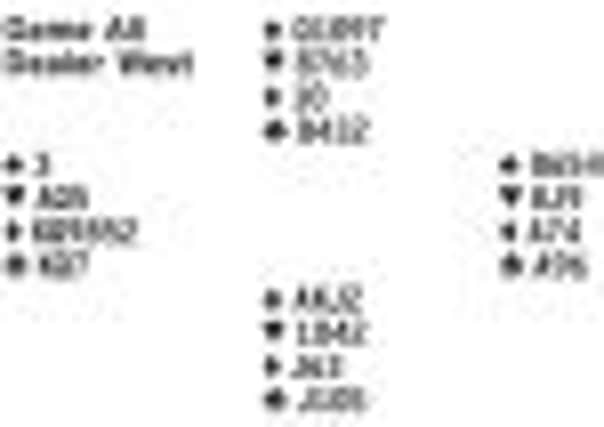Bridge - The Scotsman 29/11/2012


This year’s winners were Mary Mutch and May Willox of Cruden Bay, who scored an unprecedented 33 points out of 40.
They were the only pair to cope adequately with this East-West bidding problem. East does not particularly want to introduce his weak spade suit, but the only alternative is 3NT, which uses up a lot of space. After the 1S response East might rebid 3D, but the suit is not quite up to strength, and the misfit for partner’s suit suggests caution. Some rebid 1NT, but only the winners found the excellent temporising bid of 2C. East’s hand is quite useful opposite a minor two-suiter, and she jumped to 3D to set trump. Now West introduced Gerber. This type of hand, with so many second round controls, is ideal for an ace-asking convention. Gerber is looked down upon by experts, but there is a strong case for conserving space when your agreed suit is a minor – you can stop safely in five when missing two aces. So when a minor is clearly agreed at a low level some use Roman Keycard Gerber; others adopt Minorwood, where four of an agreed minor is the asking bid.